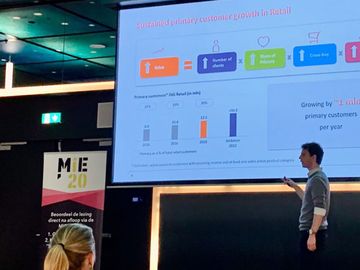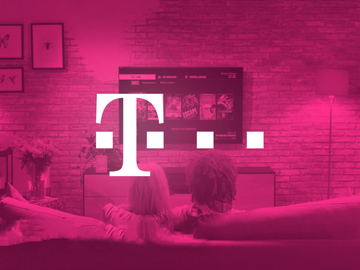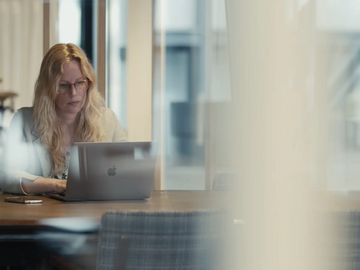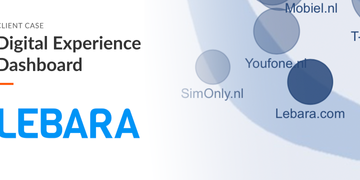
How Lebara’s Marketing Director Uses Digital Experience Dashboard
In Q4 2020, WUA set up chats with our dearest clients to talk about “The New WUA”: the product and organizational shift that WUA is making, with the Digital Experience Dashboard taking on a huge role. In this edition: Eelco Gijze, marketing and sales director at Lebara.
Let’s start with a short intro: what does your job at Lebara look like, can you tell us a bit more about your role and the organization you work in?
“I’ve been working for two years at Lebara. I used to be in charge of sales only, but started doing marketing too in April 2020. That shift—putting everything under one hat—is typical for the transformation that we’re going through. We’ve always been strong in prepaid. That’s where our foundation is. Three years ago, we started offering SIM-only subscriptions, and we were the first country to do that, out of the five countries where Lebara operates. Since then, our way of working has changed dramatically. That’s going really well, because this is a company that is used to a high level of entrepreneurship. Everyone wants to improve things and grow fast!”
“If we invest in research, it has to pay for itself. Otherwise we don’t do it.”
What are the big digital challenges you and the teams have to cope with at Lebara to accelerate digital growth, and how do you manage?
“For SIM-only, we are successfully using the broad distribution network that was already in place for our prepaid offering, but it is a very digital playing field, and we weren’t really set up for that in the past. That’s why we’re going through this transition, so that we can catch up really quickly. We want to be faster on the front end than we are actually able to build on the back end, because, as is often the case, IT capacity is scarce. And that’s where our entrepreneurship comes into play, because if there’s something that our IT development can’t do quickly enough, then we look at how we can hack it ourselves.
“Another challenge is how we position Lebara as a SIM-only brand. We’re facing the challenge of being a brand that’s been very successful in the prepaid market for 15 years, but we have to work twice as hard now to show that we’re a trusted provider for SIM-only services too.
At Lebara, T-Mobile, and Vodafone you’ve been working with WUA. You and your teams have always kept us sharp and you still do. How do you reflect on the last five years of working with us?
“I hadn’t heard of WUA before I started working at Vodafone Thuis and several of my team members were big fans of yours. I am pretty pragmatic, myself. I’ll look into anything if I think it can help me to improve. But I also think it’s important for any investment in research to pay for itself. Otherwise, we don’t do it. The first studies we did at Vodafone Thuis raised a lot of useful points for improvement and gave us a huge amount of feedback. If you take that kind of information seriously, then you can really do a lot with it. But you also have to keep in mind, it’s always just n=400. A random sample. And it’s just a single moment in time!
“After we had done two studies, I noticed we were getting a little lazy as a team. WUA came and presented everything each time, and we just consumed it. It was too easy. So, then we flipped it around: my team had to comb through the results and present to WUA what you would normally have been presenting to us. And that worked really well! I really enjoy the interaction with your teams and how engaged WUA is. It feels like you are really working to help us to do things better!”
Since the summer of 2019, the Digital Experience Dashboard is playing an important role in the organizational “shift” WUA is making. How did you experience this: what developments did you see from a client perspective?
“In 2019, I quit working at T-Mobile and switched to Lebara. At that time, our website was really below the mark, so we decided to delay ordering the SIM-only study until the beginning of 2020, so we could get the basics in place first. My first experience with using the dashboard was in April 2020. We had a low n at that time and were ranked at number 13. We bought that research, but the n was too low to reach any useful conclusions about our own website, so we most learned from what our competitors were doing right. After that, we also did a usability study with WUA, and we used the information from that study to make a lot of adjustments, which we finished in October 2020.”
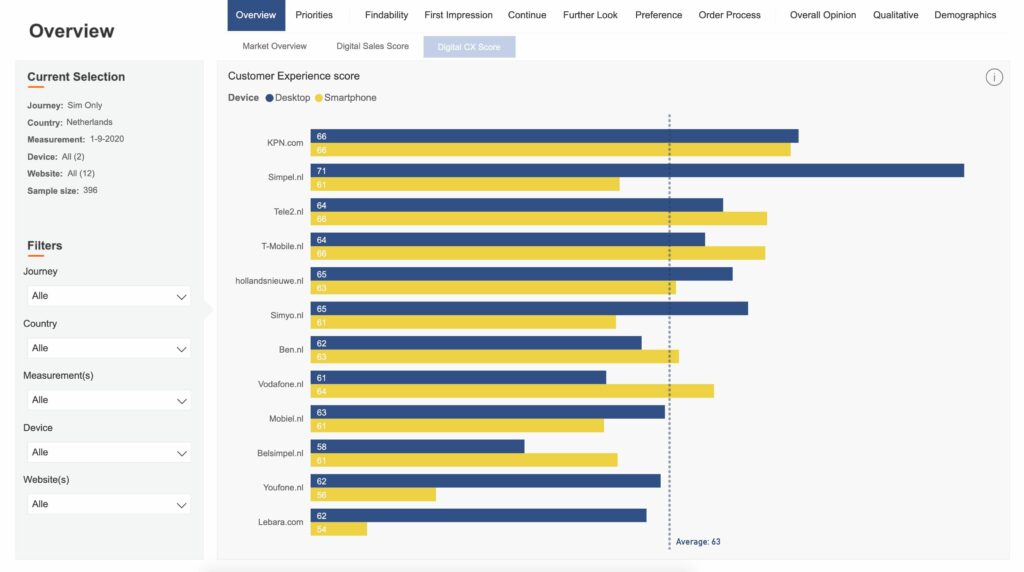
With Lebara, you’ve worked with the Digital Experience Dashboard for a while now. What results and improvement are you most proud of?
“In October 2020, we started working at full speed with the SIM-only dashboard. I have a really enthusiastic team that likes to research a lot of things for themselves. The dashboard fits right into this. You can look at every cross section and zoom in and drill down wherever you want.
“We got a lot of information out of this study. And we need to properly address all of those points across the full span of our brand. Two weeks ago, we went through the entire study with Guus. The team got a long list of points for improvement out of that, and we’re starting to get to work on those. We came in at number 12, but we want to be high in the top 10. Of course, everyone who outranks us is also constantly improving, but in our case, when you’re starting a rock bottom, the only way to go is up (laughing)! The Dashboard is really going to help us to improve. We also presented the Dashboard and the findings to the sales managers responsible for retail, by the way. So, we’re translating the research results to our offline operations too!”
“I want to know WHY people feel the way they do. This Dashboard gives me the answers behind the numbers.”
What feature of the Digital Experience Dashboard is used most? What do you find the most insightful?
“I look at the open answers very closely. We’re still scoring low compared to the rest of the market, and I want to find out the underlying reasons for that. I want to know WHY people feel the way they do. The dashboard gives me the answers behind the numbers. The open answers show where people run into obstacles that hold them back from clicking on the order button.
“For example, I saw a comment that said, ‘Why do I have to pay extra for 4G? That’s so old school.’ With us, you can double your download speed for 50 cents if you want. But some people don’t understand, and they apparently think the basic connection is 3G, but it isn’t. It’s actually 4G. So, that offer to ‘double’ the connection speed gives people the perception that our basic connection isn’t fast enough. Those are the kinds of things you can get out of the Dashboard!”
